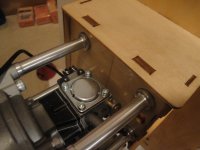3dNater
3DRCF Regional Ambassador
I don't have a link to a resolution discussion but we can have one here. My understanding is that resolution is how many points your radio can recognize in your stick movements. The servo also has limited resolution. Think of it like a TV screen because I think the parralel works. A small (15") display at 720p is going to look real close to the same as a 1080p screen the same size. It's true that you could have more clarity on small objects but from tv viewing distance the difference doesn't really matter. Now, if you scale it up to a larger screen the 720p will start looking like crap while the 1080p still looks pretty good.
The radios we have today have really high resolution compared to the TV example. My Hitec aurora 9x has 4096 resolution. That means there are 4096 points between the bottom of the stick and the top of the stick that can be recognized as inputs. You could scale that up to quite a large travel percentage and it would still be incredibly fine.
I think the resolution argument can be sort of taken off the table except when using less than 100% of travel. The bigger issue is going to be torque.
You read a lot of info about servo speed and torque ratings. Realizing that servos turn a realitvely small cylinder with a relatively long lever attached we know that the longer the lever is the further the surface will move. The trade off is that you also get less holding torque.
The strategy for balancing the throw we want while getting good torque is to maximize end points (make the servo move as far as possible) and have fast servos that can travel their entire range quickly. This takes full advantage of the high resolution of today's radios and gives optimal performance on the plane. To maximize end points you need the right length of arm and consideration and time should be devoted during initial setup of the plane to achieve these ends.
The radios we have today have really high resolution compared to the TV example. My Hitec aurora 9x has 4096 resolution. That means there are 4096 points between the bottom of the stick and the top of the stick that can be recognized as inputs. You could scale that up to quite a large travel percentage and it would still be incredibly fine.
I think the resolution argument can be sort of taken off the table except when using less than 100% of travel. The bigger issue is going to be torque.
You read a lot of info about servo speed and torque ratings. Realizing that servos turn a realitvely small cylinder with a relatively long lever attached we know that the longer the lever is the further the surface will move. The trade off is that you also get less holding torque.
The strategy for balancing the throw we want while getting good torque is to maximize end points (make the servo move as far as possible) and have fast servos that can travel their entire range quickly. This takes full advantage of the high resolution of today's radios and gives optimal performance on the plane. To maximize end points you need the right length of arm and consideration and time should be devoted during initial setup of the plane to achieve these ends.

